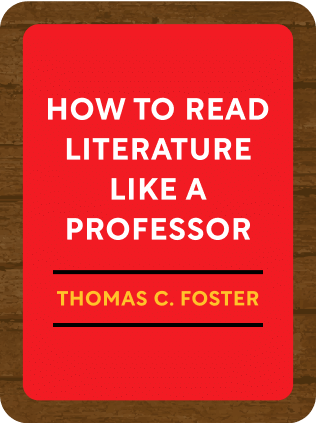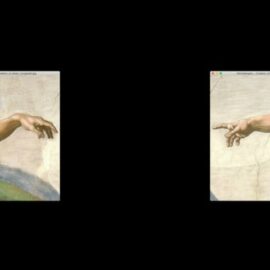

This article is an excerpt from the Shortform book guide to "How to Read Literature Like a Professor" by Thomas C. Foster. Shortform has the world's best summaries and analyses of books you should be reading.
Like this article? Sign up for a free trial here .
What does it mean when authors reference the Bible in literature? What biblical symbols should you be on the lookout for?
Authors commonly reference the Bible to deepen the meaning of their work. Many authors also use the Bible to highlight the differences between religious tradition and modern life.
Keep reading to learn why the Bible is so commonly referenced in literature and what those references may mean.
Sacred Texts and Literature
In order to truly read literature like a professor, you need to be on the lookout for references to “sacred texts,” like Shakespeare, classic fairy tales, and ancient myths, and the Bible in literature.
Using recognizable themes or plots from these sacred texts gives the author the chance to use the reader’s associations to say more in their own work with fewer words. And for the reader, recognition of these references enhances the experience of current literature, because the modern stories share in the power of the sacred text.
The Bible in Literature
Like Shakespeare’s work, the Bible is an age-old and widely-known text that provides authors (even non-religious ones) the chance to deepen the meaning of their work with relatively few words.
In literature, the Bible inspires:
- Plots
- Titles
- Character names
- Quotations
Think of some of the common stories from the Bible: Judgement Day, the Fall, the Prodigal Son. Have you seen these stories mirrored in literary works before? Chances are, you have.
Example: In James Joyce’s story “Araby,” a young boy feels desire for the first time, so he tries to buy a gift for the object of his desire. In the process, he realizes that his affections are just the ordinary kind, and that this girl will probably never love him. Any story, like this one, that is about a loss of innocence is really a story about the Fall of man.
Many authors use the Bible to highlight the differences between religious tradition and modern life.
- Example: Ernest Hemingway used the title The Sun Also Rises, which alludes to a passage from the Bible that is about life’s endless cycle. The passage reminds us that every night is followed by a new day, and every death is followed by new life. But Hemingways’ book is about hopelessness—it’s about infertility and the feeling that the future will never come. Hemingway’s ironic biblical reference is meant to highlight a key theme for the reader.
How to Look for Biblical Allusions
If you read something that seems to resonate more deeply than the story itself, chances are it comes from something bigger, like a Bible story. If a quotation sounds different than the rest of the story’s prose, take note.
When you read something that alludes to the Bible, know that the author is trying to give you the sense that the story is not only about the characters in that time and place. The author wants you to know that the story is timeless—it speaks to the tensions and struggles that have existed since the beginning of man.
Christ Figures
In order to read literature like a professor, you must be able to recognize the religious traditions of the culture from which the literature originates. For example, to read English and American novels in a scholarly capacity, you will need to know about the Old and New Testaments of the Bible.
Even if the author of a particular novel is not a religious believer, Christian principles and values will inform the literary work because it is such a dominant part of our culture.
One of the most prevalent ways that religion informs literature is through the presence of a Christlike figure. How do you know when a character is being portrayed as a parallel to Christ?
Look for some of these signs:
- Wounds on hands, feet, side, or head
- Self-sacrifice
- Good with kids
- Disciples
- Parables
- Walking on water
- Outstretched arms
- Resurrection
- Time alone in wilderness
- Temptation by the devil
- Restores hope to those around him
Within a literary work, a character who stands for a Christ figure might not necessarily exhibit all of these signs. The figure could be a woman, a criminal, or any kind of character—even one that looks opposite to the Christ we know from the Bible. But if you can identify a couple of the listed behaviors in a character, you should put your antennae up.
The use of a Christ figure in a novel can serve many purposes, not all of which will suggest something religious. Perhaps the author wants to deepen the sense of sacrifice or forgiveness or redemption in their novel by using the parallel to Christ.
Example: The Old Man and the Sea
In Hemingway’s The Old Man and the Sea, we meet an old, pure-of-heart fisherman who befriends a young boy. During a fishing trip one day, the old man catches a big fish and gets carried out to sea, alone. During his struggles at sea, the man comes up with several parable-like pieces of wisdom. Three days later, he comes back to land, where everyone assumed him dead—a kind of resurrection. He goes home and lays on his bed with his arms thrown out to the side. He has raw, damaged hands from his adventure. Because of the fish he returns with, peoples’ belief in the old man is redeemed.
Even for beginning readers, the parallels between Hemingway’s story and the Christian portrayal of Christ are clear.

———End of Preview———
Like what you just read? Read the rest of the world's best book summary and analysis of Thomas C. Foster's "How to Read Literature Like a Professor" at Shortform .
Here's what you'll find in our full How to Read Literature Like a Professor summary :
- How to get more out of the novels that you read
- Why you should focus on memory, symbols, and patterns to understand literature better
- Why sex scenes aren't always about sex






